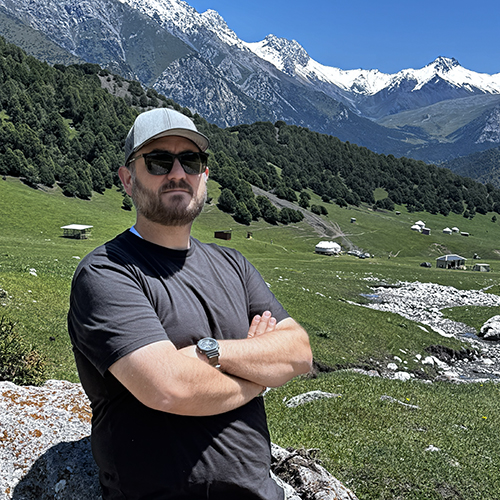There’s a whole world between your ears. And neuroscientist Bing Brunton, assistant professor of biology, would like to visit it.
Brunton likens the complexity of the human brain to a bustling world, complicated at every level. Each neuron in the brain — and there are billions — contains thousands of connections that function like little cities, with infrastructure and energy factories and workers and highways to deliver supplies and remove refuse. “And that’s just a tiny part of the brain,” says Brunton. “When we start zooming out, there is an enormous gallery of different types of neurons, and then layers of organization, and different areas of the brain with different functions.”
To study such a complex organ, Brunton believes that quantitative methods — analyzing data from brain activity — is the best approach. “We have 86 million neurons in the brain, and every single one of them talks to approximately 1,000 other ones,” she says. “When you’re working with a system that complicated, you need a mathematical understanding. I’ve always been drawn to quantitative techniques, quantitative explanations for things.”

Brunton explains that brain cells talk to each other using electrical signals — the same electricity that powers a computer or radio. The way we experience the world, produce sensations, reason, and experience emotion are all based on those signals. And just as a car antenna picks up radio signals, wires placed in the brain can measure and record electrical activity from nearby neurons.
This is a really interesting opportunity for developing new computational and mathematical methods to understand the giant pile of data we have.
With recent advances in technology, scientists are able to record and measure signals from many brain cells simultaneously, more quickly and for longer periods than ever before. The challenge is to find meaningful patterns in the recorded data that might help explain how our brains process information, make decisions, and execute tasks from walking to speaking. Traditional mathematical techniques don’t scale well for such large data sets, so what’s needed are new methods. That’s where Brunton comes in.
“This is a really interesting opportunity for developing new computational and mathematical methods to understand the giant pile of data we have,” says Brunton, a member of the UW Institute for Neuroengineering and a data-science fellow with the UW eScience Institute. “This has happened over and over in the physical sciences — people observe some new phenomenon and they have to invent new mathematics in order to explain it. Newton did that to some extent. He figured out gravitation and had to invent calculus to deal with it. That is starting to happen in biology, and I feel like understanding the complexity of the brain might demand something like that.”

Much of Brunton’s data comes from collaborators at UW Medicine. They record electrical activity during neurosurgeries for clinical purposes, but then share the data with Brunton with permission from patients. Brunton also uses data from animal research, most recently working with Department of Biology colleagues who study subtleties of insect flight. They now record brain activity in addition to other functions as the insects fly. “Their brains are much, much simpler, so we focus on things that are relevant to that organism,” says Brunton. “We look at how they fly so well and how they respond to aerodynamic forces.” Brunton’s research is funded by the Washington Research Foundation, the Alfred P. Sloan Foundation, and the National Science Foundation.
Given the complexity of the brain, Brunton could spend a lifetime studying it, which suits her just fine. “Each of our brains is individual and deeply personal to who we are,” she says. “We know a lot about some things, like the interactions of individual proteins, but how do you get from that to a person running or dancing or doing science? That’s still completely mysterious.”
More Stories

A Sports Obsession Inspires a Career
Thuc Nhi Nguyen got her start the UW Daily. Now she's a sports reporter for Los Angeles Times, writing about the Lakers and the Olympics.

Through Soil Science, an Adventure in Kyrgyzstan
Chemistry PhD alum Jonathan Cox spent most of 2025 in Kyrgyzstan, helping farmers improve their soil—and their crops—through soil testing.

The Public Impact of Private Cities
Geography major Edwin Bai has researched private cities, developed by individuals and corporations, that "take the libertarian idea of low government regulation to the maximum."